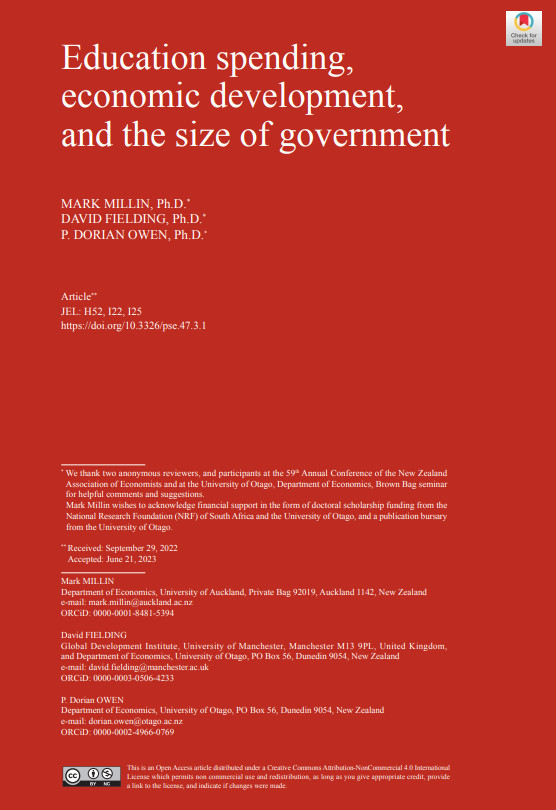Education spending, economic development, and the size of government
DOI:
https://doi.org/10.3326/pse.47.3.1Keywords:
education spending, Wagner’s law, Baumol’s cost disease, economic development, democracyAbstract
We examine the association between economic development and two measures of public spending on education: the “national effort” (public spending on education as a proportion of GDP) and “budget share” (public spending on education as a proportion of total government spending). Using panel data for a large sample of countries from 1989 to 2015, we compare mean levels of national effort and budget share measures for economically and politically distinct groups of countries. We find that economically more developed (richer) countries are characterised by a higher national effort and a lower budget share than less economically developed countries. This implies that richer countries, on average, have larger public sectors than poorer countries, consistent with Wagner’s law and Baumol’s “cost disease” hypothesis.

Downloads
Published
How to Cite
Issue
Section
License
Copyright (c) 2023 Mark Millin, David Fielding, Dorian Owen

This work is licensed under a Creative Commons Attribution-NonCommercial 4.0 International License.








